Les négatifs perdus de Robert Capa
To the small group of photography experts aware of its existence, it was known simply as “the Mexican suitcase.” And in the pantheon of lost modern cultural treasures, it was surrounded by the same mythical aura as Hemingway’s early manuscripts, which vanished from a train station in 1922.
The suitcase — actually three flimsy cardboard valises — contained thousands of negatives of pictures that Robert Capa, one of the pioneers of modern war photography, took during the Spanish Civil War before he fled Europe for America in 1939, leaving behind the contents of his Paris darkroom. (Photo: Tony Cenicola/The New York Times)
Shots from the Spanish Civil War battle of Rio Segre were made from the newly discovered negatives of Gerda Taro and Robert Capa.
Capa assumed that the work had been lost during the Nazi invasion, and he died in 1954 on assignment in Vietnam still thinking so. But in 1995 word began to spread that the negatives had somehow survived, after taking a journey worthy of a John le Carré novel: Paris to Marseille and then, in the hands of a Mexican general and diplomat who had served under Pancho Villa, to Mexico City.
Last month they made what will most likely be their final trip, to the International Center of Photography in Midtown Manhattan, founded by Robert Capa’s brother, Cornell. “This really is the holy grail of Capa work,” said Brian Wallis, the center’s chief curator. (Photo: Robert Capa, courtesy of Cornell Capa/Magnum Photos)
“The Falling Soldier” by Robert Capa
The discovery has sent shock waves through the photography world, not least because it is hoped that the negatives could settle once and for all a question that has dogged Capa’s legacy: whether what may be his most famous picture — and one of the most famous war photographs of all time — was staged. Known as “The Falling Soldier,” it shows a Spanish Republican militiaman reeling backward at what appears to be the instant a bullet strikes his chest or head on a hillside near Córdoba in 1936. When the picture was first published in the French magazine Vu, it created a sensation and helped crystallize support for the Republican cause.
Doubts about the photograph have persisted. In part this is because Capa made no pretense of journalistic detachment during the war and was known to photograph staged maneuvers, a common practice at the time. The discovery of a negative, especially in the original sequence showing all the images taken before and after the shot, could end the debate. (Photo: Robert Capa/I.C.P. Collection)
Shots of soldiers at rest were also made from the newly discovered negatives.
But the discovery is being hailed as a huge event for more than forensic reasons. This is the formative work of a photographer who, in a century defined by warfare, played a pivotal role in defining how war was seen, bringing its horrors nearer than ever — “If your pictures aren’t good enough, you’re not close enough” was his mantra — yet in the process rendering it more cinematic and unreal. (Capa, not surprisingly, later served a stint in Hollywood, befriending directors like Howard Hawks and romancing Ingrid Bergman.) (Photo: Robert Capa, courtesy of Cornell Capa/Magnum Photos)
Capa practically invented the image of the globe-trotting war photographer, with a cigarette appended to the corner of his mouth and cameras slung over his fatigues. His fearlessness awed even his soldier subjects, and between battles he hung out with Hemingway and Steinbeck and usually drank too much, seeming to pull everything off with panache. William Saroyan wrote that he thought of Capa as “a poker player whose sideline was picture-taking.” (Photo: Robert Capa, courtesy of Cornell Capa/Magnum Photos)
In a Warholian way that seems only to increase his contemporary allure, he also more or less invented himself. Born Endre Friedmann in Hungary, he and Gerda Taro, his partner professionally and at one time personally, cooked up the persona of Robert Capa — they billed him as “a famous American photographer” — to help them get assignments. He then proceeded to embody the fiction and make it true. (Photo: Robert Capa, courtesy of Cornell Capa/Magnum Photos)
Curators at the International Center of Photography have begun a months-long effort to conserve and catalog the newly discovered work. Mr. Wallis said that while conservation experts from the George Eastman House in Rochester are only now beginning to assess the condition of the film, it appears to be remarkably good for 70-year-old nitrate stock stored in what essentially looks like confectionery boxes.
“They seem like they were made yesterday,” he said. “They’re not brittle at all. They’re very fresh.”. (Photo: Robert Capa, courtesy of Cornell Capa/Magnum Photos)
The Republican soldiers at Segovia front in Spain in 1936, taken by Gerda Taro.
The research could bring about a reassessment of the obscure career of Taro, one of the first female war photographers. She and Capa worked closely together and labeled some of their early work with joint credit lines, sometimes making it difficult to establish authorship conclusively, Mr. Wallis said. He added that there was even a remote possibility that "The Falling Soldier" could be by Taro and not Capa.
"That's another theory that's been floated," he said. "We just don't know. To me that's what's so exciting about this material. There are so many questions and so many questions not even yet posed that they may answer." (Photo: Gerda Taro, courtesy of the International Center of Photograph)
Robert Capa in Spain in 1937, by Gerda Taro.
Ultimately, Mr. Wallis said, the discovery is momentous because it is the raw material from the birth of modern war photography itself.
“Capa established a mode and the method of depicting war in these photographs, of the photographer not being an observer but being in the battle, and that became the standard that audiences and editors from then on demanded,” he said. “Anything else, and it looked like you were just sitting on the sidelines. And that visual revolution he embodied took place right here, in these early pictures.” (Photo: Gerda Taro, courtesy of the International Center of Photography)
Lire l'article "The Capa Cache" de Randy KENNEDY http://www.nytimes.com/2008/01/27/arts/design/27kenn.html?_r=1&oref=slogin
MEXICO CITY.- A long-lost set of negatives of pictures taken by Robert Capa during the Spanish Civil War, David Seymour and Gerda Taro have turned up in Mexico City. Robert Capa died in Vietnam in 1954 believing that the set of negatives Around 3,500 negatives were found. Capa believed right up to his death in Vietnam in 1954 that this set of negatives had been taken by the Germans when they invaded Paris. Capa had left Paris in 1939 for the U.S.
Mexican general Francisco Aguilar González took the negatives back to Mexico.
Art expert Trisha Ziff, who was involved in the recover of this material stated that the images will be part of a great exhibition on the Spanish Civil War which could take place in 2009. The negatives are now with the International Centre of Photography in New York. (courtesy www.Artdaily.org)

/https%3A%2F%2Fprofilepics.canalblog.com%2Fprofilepics%2F1%2F0%2F100183.jpg)
/https%3A%2F%2Fstorage.canalblog.com%2F03%2F02%2F119589%2F96711876_o.jpg)
/https%3A%2F%2Fstorage.canalblog.com%2F11%2F31%2F119589%2F94773502_o.jpg)
/https%3A%2F%2Fstorage.canalblog.com%2F20%2F83%2F119589%2F94772815_o.jpg)
/https%3A%2F%2Fstorage.canalblog.com%2F26%2F72%2F119589%2F75604929_o.jpg)
/https%3A%2F%2Fstorage.canalblog.com%2F59%2F60%2F119589%2F26458628_o.jpg)
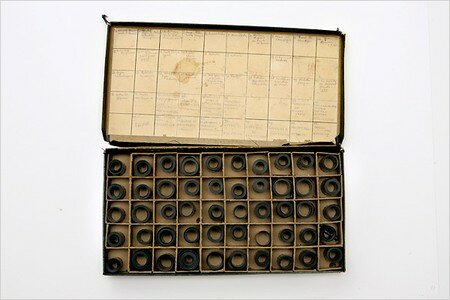


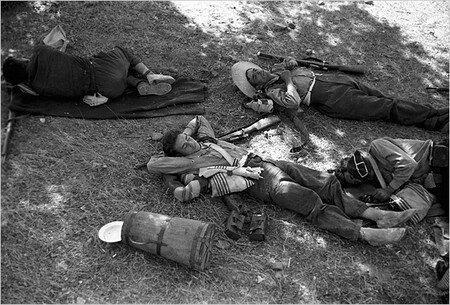

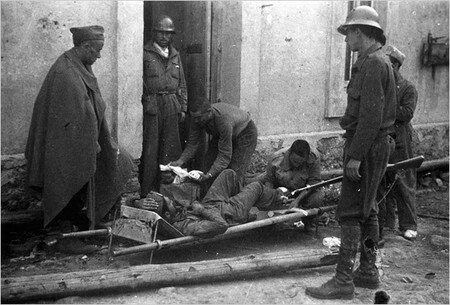
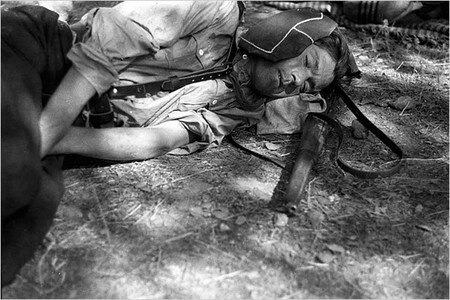

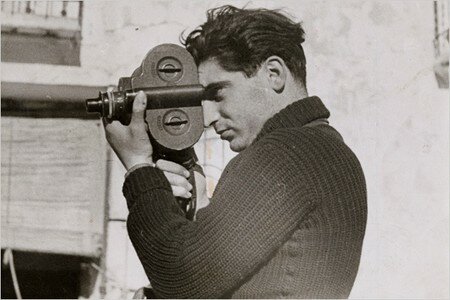


/image%2F1371349%2F20240426%2Fob_dcd32f_telechargement-32.jpg)
/image%2F1371349%2F20240426%2Fob_0d4ec9_telechargement-27.jpg)
/image%2F1371349%2F20240426%2Fob_fa9acd_telechargement-23.jpg)
/image%2F1371349%2F20240426%2Fob_9bd94f_440340918-1658263111610368-58180761217.jpg)